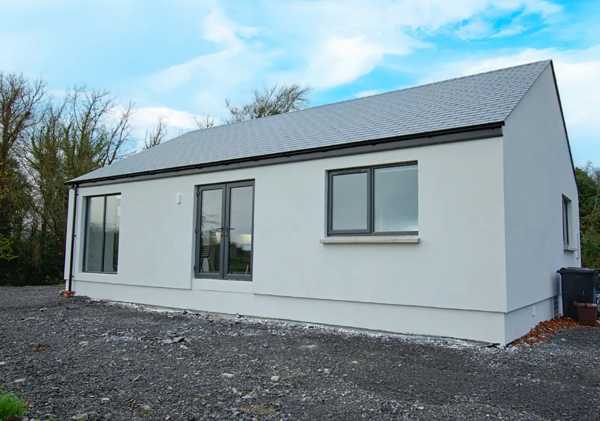
The Best Places to See the Northern Lights in 2024 and 2025
The Aurora Borealis, commonly referred to as the Northern Lights, is a captivating natural light display primarily visible in high-latitude regions surrounding the Arctic and Antarctic. These mesmerizing spectacles are the product of collisions between charged particles from the sun that enter the Earth's atmosphere. As the solar cycle approaches its peak in the coming years, the Northern Lights are anticipated to be especially dazzling and vibrant. In 2024 and 2025, several prime destinations will provide excellent opportunities for observers to witness this breathtaking natural phenomenon.
The Aurora Borealis, commonly referred to as the Northern Lights, is a captivating natural light display primarily visible in high-latitude regions surrounding the Arctic and Antarctic. These mesmerizing spectacles are the product of collisions between charged particles from the sun that enter the Earth's atmosphere. As the solar cycle approaches its peak in the coming years, the Northern Lights are anticipated to be especially dazzling and vibrant. In 2024 and 2025, several prime destinations will provide excellent opportunities for observers to witness this breathtaking natural phenomenon.

Tromsø, Norway
Tromsø, often referred to as the "Gateway to the Arctic," is one of the best places in the world to view the Aurora Borealis. Located above the Arctic Circle, Tromsø offers a high probability of clear skies and vivid Northern Light displays, especially during the winter months. The city itself has a range of amenities and activities, including the Polar Museum and the Arctic Cathedral, making it an excellent base for a Northern Lights expedition.
Why Tromsø?
• Geographical Advantage: Tromsø's location at 69 degrees North latitude ensures a high likelihood of witnessing the Aurora Borealis.
• Accessibility: Tromsø is accessible via direct flights from several European cities.
• Activities: In addition to the awe-inspiring Northern Lights, these destinations also offer a variety of engaging activities for visitors, including dog sledding, whale watching, and opportunities to immerse themselves in Sami cultural experiences.
Fairbanks, Alaska, USA
Fairbanks is another top destination for Northern Lights enthusiasts. Located just two degrees below the Arctic Circle, Fairbanks offers a prime viewing location with a high probability of clear nights. The University of Alaska's Geophysical Institute provides daily aurora forecasts, enhancing your chances of catching a glimpse of the lights.
Why Fairbanks?
• Aurora Season: The best time to visit is between late August and April, when the nights are longest.
• Aurora Borealis Lodge: This lodge offers guided tours and prime viewing spots away from city lights.
• Cultural Experience: Fairbanks also offers a rich cultural experience, including hot springs and ice sculptures.
Yellowknife, Canada
Yellowknife, the capital of Canada's Northwest Territories, is renowned for its clear skies and frequent Northern Lights displays. The city's location under the Auroral Oval makes it one of the best places in the world to witness this natural wonder.
Why Yellowknife?
• Auroral Oval: Yellowknife's position directly under the Auroral Oval ensures consistent and vivid displays.
• Aurora Village: This indigenous-owned resort offers an immersive Northern Lights experience with heated teepees and local cuisine.
• Accessibility: Regular flights from major Canadian cities make Yellowknife easily accessible.
Reykjavik, Iceland
Iceland's capital, Reykjavik, offers not only a vibrant city experience but also excellent opportunities to witness the Northern Lights. The country's unique landscapes provide a stunning backdrop for the auroras, enhancing the overall experience.
Why Reykjavik?
• Scenic Beauty: Iceland's landscapes, including volcanoes, geysers, and waterfalls, add to the visual spectacle.
• Accessibility: Reykjavik is well-connected to many international destinations.
• Cultural Attractions: The city's rich culture, including museums and music festivals, offers plenty to do when not chasing the lights.
Abisko, Sweden
Abisko in Sweden is another top destination to witness the Aurora Borealis. The Abisko National Park, with its clear skies and minimal light pollution, provides an ideal setting for aurora viewing.
Why Abisko?
• Aurora Sky Station: Located in the national park, this station offers guided tours and an observation tower.

• Weather Conditions: The unique climate of Abisko creates a "blue hole" of clear skies, enhancing aurora visibility.
• Activities: Besides aurora viewing, visitors can enjoy hiking, skiing, and the Sami culture.
Rovaniemi, Finland
Rovaniemi, the official hometown of Santa Claus, offers a magical setting to witness the Northern Lights. Located in the heart of Lapland, Rovaniemi's long winter nights provide ample opportunities for aurora spotting.
Why Rovaniemi?
• Santa Claus Village: A family-friendly destination with activities and attractions themed around Santa Claus.
• Aurora Hunting Tours: Several operators offer guided tours to the best viewing spots.
• Winter Activities: Enjoy snowmobiling, reindeer sleigh rides, and ice fishing.
Kiruna, Sweden
Kiruna, located in the far north of Sweden, is another excellent destination for Northern Lights enthusiasts. The town is known for its Icehotel, the world's first hotel made entirely of ice and snow.
Why Kiruna?
• Icehotel: A unique opportunity to stay in a hotel made of ice, with rooms featuring ice sculptures.
• Aurora Viewing: The surrounding wilderness offers minimal light pollution and excellent viewing conditions.
• Sami Culture: Experience the local Sami culture through guided tours and activities.
Svalbard, Norway
For those looking for a truly Arctic experience, Svalbard offers a unique opportunity to see the Northern Lights during the polar night. The archipelago, located midway between mainland Norway and the North Pole, experiences complete darkness from mid-November to late January.
Why Svalbard?
• Polar Night: The extended period of darkness increases the chances of seeing the auroras.
• Arctic Wildlife: Opportunities to see polar bears, reindeer, and arctic foxes.
• Remote Beauty: Svalbard's remote location offers stark, untouched landscapes.
Conclusion: Chasing the Northern Lights
Witnessing the Aurora Borealis is a bucket-list experience for many, and the upcoming years of 2024 and 2025 promise exceptional displays due to the peak of the solar cycle. Whether you're exploring the Arctic wilderness of Norway, the cultural hubs of Alaska and Iceland, or the remote beauty of Svalbard, each destination offers a unique experience. Plan your trip carefully, consider the best times and locations, and prepare to be awestruck by one of nature's most spectacular light shows.





